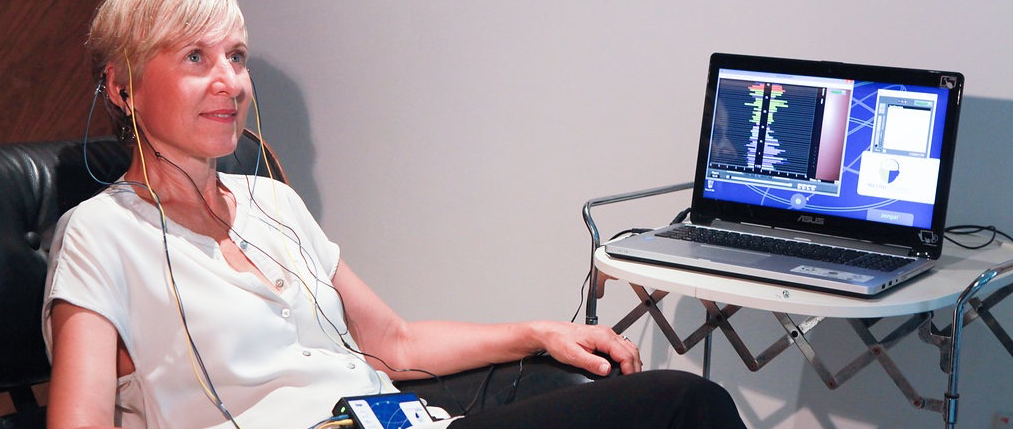NEUROPTIMAL® Training supports many kinds of treatments
The training program is applied in Cancer Treatment, Alzheimers Desease, ADS, Sleep Disorders and more as an addition to medical treatments
NeurOptimal® has a worldwide presence with an estimated 1.2 million hours of cumulative training time. Hundreds of trainers have used NeurOptimal® over thousands of hours of direct client experience demonstrating that most clients can expect significant improvement of 60% or better.
You may find more information on the different applications of NeurOptimal® in a variety of treatments and therapies.
Cancer Therapy
This study examined the efficacy of EEG biofeedback (neurofeedback) in addressing the cognitive squeal of cancer therapy, commonly known as “chemobrain” or “chemofog.” Approximately fifty percent of breast cancer survivors exhibit cognitive impairment within three weeks of beginning chemotherapy, and half of those have not recovered one year later. Neurofeedback, unlike compensatory strategies currently recommended by the National Cancer Institute and major cancer centers, has the potential to restore cognitive function. Please click on the image to read the PDF document.
The Effect of EEG Biofeedback on Reducing Postcancer Cognitive Impairment
Jean Alvarez, EdD, Fremonta L. Meyer, David L. Granoff and Allan Lundy
Integr Cancer Ther published online 12 April 2013, DOI: 10.1177/1534735413477192
The abstract is available here where the full article is available for purchase. Alternatively you may email Jean Alvarez directly for a full copy.
Alzheimers Desease
The Latest News on The Continuing Research of Neuroptimal®’s Effects on Alzheimers Patients in France
Daniel Wagner, Zengar NeurOptimal® French Representative & Instructor
Founder of France Neurofeedback NeurOptimum®
Experiences with Alzheimer’s Clients From Referring Hospitals in France
Daniel Wagner, Zengar NeurOptimal® French Representative & Instructor
Founder of France Neurofeedback NeurOptimum®
How does NeurOptimal® help to improve focus and attention in children?
Please click on the respective links to read the various studies on the topic.
A Kid, An Idea, A Study And A Big Payoff
A doctoral dissertation submitted to the Dean of Behavioural Health, July 2010.
Six Case Studies Examining the Effectiveness of a Comprehensive Adaptive Approach to Neurofeedback for Attention Deficit in an Educational Setting
By Shannon Warwick, MA
Union Institute and University at Vermont College,Asheville, North Carolina
Effectiveness of EEG Biofeedback as Compared with Methylphenidate in the Treatment of Attention-Deficit/Hyperactivity Disorder: A Clinical Outcome Study
Mohammad Ali Nazari1, Laurent Querne2, Alain De Broca2, Patrick Berquin2
1Department of Psychology, University of Tabriz, Tabriz, Iran; 2Department of Paediatric Neurology, Lab. Neurosciences Fonction- nelles & Pathologies, Amiens, France.
Neurofeedback with Anxiety and Affective Disorders
By D. Corydon Hammond, PhD, ABEN/ECNS
Physical Medicine and Rehabilitation, University of Utah School of Medicine, PM&R 30 No 1900 East, Salt Lake City, UT 84132-2119, USA
The Effects of EEG Neurofeedback and Neuro-Cognitive Processing in the
Educational Environment of an Arts-Based Private Elementary/Middle School
By Lise’ DeAndre’ DeLong
The purpose of this study was to ascertain measurable differences in academic outcomes among two groups of learners within a creative arts curriculum that employed a self-directed, stress-reduced, and individualized curriculum. One group was provided with EEG neurofeedback and neuro-cognitive coaching for stress reduction, while the other was not. This study measured the rate of improvement in academic progress that a learner can achieve when formalized learning takes place in a stress-reduced arts-based learning environment with EEG neurofeedback and neurocognitive coaching.
Natural Sleep Rhythms: From Cells to Behavior
How NeurOptimal® potentially interfaces with, and restores, natural sleep rhythms. New evidence mapping cellular networks underlying the brain’s circadian timing nucleus has provided a potential locus of control for the human circadian rhythm (HCR). This network provides a biologically plausible regulatory site for external influence of the HCR-notably pharmacologic agents, environmental influence, and particularly salient to this presentation, NeurOptimal®.
Dr. Ed O’Malley, Ph.D, FAASM (PhD in Neurobiology at Cornell University Graduate School of Medical Sciences; postdoc in EEG brain-mapping and clinical fellowship for board certification in Sleep Medicine (NYU School of Medicine); Director, Norwalk Hospital Sleep Disorders Center for 12 years-pioneered neurofeedback for insomnia).
Optimal Sleep Using NeurOptimal®: Insomnia Studies
Dr. Ed O’Malley, Ph.D, FAASM
Effectiveness of Neurofeedback Training In Chronic Insomnia
Okunola O,1 O’Malley E,2 O’Malley M2
Global qEEG Changes Associated With Non-frequency & Non-site Specific Neurofeedback Training
Click to download this powerpoint presentation submitted by Edward B. O’Malley, PhD, D,ABSM (Director, Norwalk Hospital Sleep Disorders Center, Norwalk CT) and Merlyn Hurd, PhD, BCIAC/EEG Fellow, New York, NY
Other interesting reads
Brain-Mind Operational Architectonics Imaging: Technical and Methodological Aspects
Andrew A. Fingelkurts, Alexander A. Fingelkurts
BM-Science – Brain & Mind Technologies Research Centre, P.O. Box 77, FI-02601, Espoo, Finland


